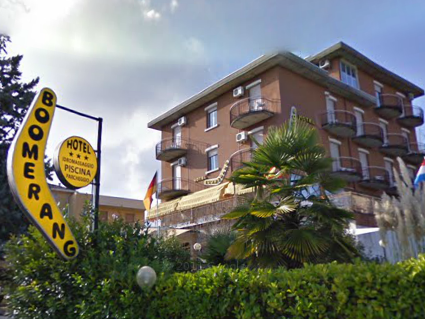The trails and breadcrumbs left behind by random one-time electronic visitors sometimes remind me of interesting things I’ve discussed previously and forgotten. Witness the recent query “boomerang” that led one anonymous reader to Fraser Island in Australia, the world’s largest sand island, and its amazing perched dune lakes. As I noted when I drafted the article back in the earliest days of 12MC,
“A perched dune lake forms when wind blows an indentation in the sand that then gradually fills with decaying vegetation. Over time the decaying organic matter creates a watertight mat that eventually permeates the sand to form something similar to concrete, almost like a swimming pool… on Frasier Island can be found Boomerang Lake, the world’s highest perched dune lake at 130m above sea level.”
The person wanted a boomerang and 12MC delivered a boomerang. Now it was time for a bit of fun and a little boomerang overkill. Were there other boomerangs, I wondered?
Obviously Australia
In Australia, yes of course, there was a stupendous overindulgence of boomerang hills, streams, islands, lagoons, lakes and anything else geographic that one could possibly imagine. The device was a hunting tool and weapon for many Australian Aboriginal groups so of course occurrences there should be expected.
The most significant, or at least most populous example, might very well be Boomerang Beach in the Mid North Coast of New South Wales. Even one of its primary roads, Boomerang Drive, displayed a roughly boomerang shape.
Boomerang Beach bordered on Booti Booti, an Australian national park. So many awful puns came to mind at that moment although I promised myself that I would behave. It became even more difficult when I learned that the “name comes from ‘butibuti,’ the local Worimi Aboriginal word meaning ‘plenty of honey.’” Must… resist… Booty… jokes.
Setting aside Australia — where boomerangs were entirely too pedestrian — I focused my attention farther away. I wondered if the theme had spread elsewhere. Well of course it had or I would have stopped typing right here.
Some Reasons Were Obvious
Plenty of features actually resembled boomerangs. I spotted this great example, Boomerang Lake, on the far eastern edge of Saskatchewan. Actually I was hoping the provincial border might split through the lake as I zoomed-in. That was not the case once I looked closer. Nonetheless, it was a nicely representative instance of boomerang-shaped geography.
Other Reasons Were More Enigmatic

I scratched my head as I pondered Hotel Boomerang in Parma, Italy. It certainly seemed enamored of its boomerangs. I figured maybe the hotel hoped to focus attention on the physics of a properly-thrown boomerang. Perhaps, using that logic, guests would enjoy their lodging and someday “return” to the hotel?
And I Filled In a Hole
I saw plenty of boomerangs in the United States. This one was a little different, a black diamond ski run at the Red Lodge Mountain Resort and roughly boomerang-shaped I guess although maybe they were talking about bouncing off trees or something. I didn’t realize Google Maps included ski trails. That reminded me — I also noticed traffic lights on one map I saw recently. Maybe they’re rolling out some new features?
The primary reason for including this boomerang instead of other instances in the United States was to fill an empty space on my Complete Index map. There, I admit it. I need to spread the geo-oddity love around.

Leave a Reply